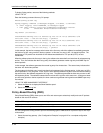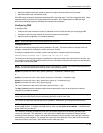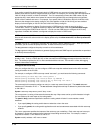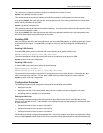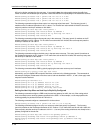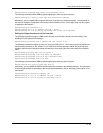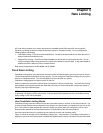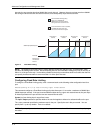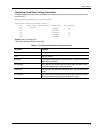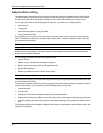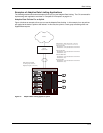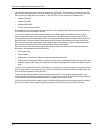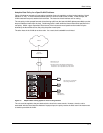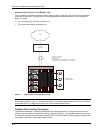
Chapter 4
Rate Limiting
HP’s rate limiting enables you to control the amount of bandwidth specific Ethernet traffic uses on specific
interfaces, by limiting the amount of data the interface receives or forwards for traffic. You can configure the
following types of rate limiting:
• Fixed Rate Limiting – Enforces a strict bandwidth limit. The device forwards traffic that is within the limit but
drops all traffic that exceeds the limit.
• Adaptive Rate Limiting – Enforces a flexible bandwidth limit that allows for bursts above the limit. You can
configure Adaptive Rate Limiting to forward, modify the IP precedence of and forward, or drop traffic based on
whether the traffic is within the limit or exceeds the limit.
Rate limiting is supported on the HP 9304M and HP 9308M.
Fixed Rate Limiting
Fixed Rate Limiting allows you to specify the maximum number of Ethernet bytes a given port can send or receive.
The port drops bytes that exceed the limit you specify. You can configure a Fixed Rate Limiting policy on a port’s
inbound or outbound direction. The rate limit applies only to the direction you specify.
Fixed Rate Limiting applies to all types of traffic on the port.
When you specify the maximum number of bytes, you specify it in bits per second (bps). The Fixed Rate Limiting
policy applies to one-second intervals and allows the port to send or receive the number of bytes you specify in
the policy, but drops additional bytes.
NOTE: HP recommends that you do not use Fixed Rate Limiting on ports that send or receive route control traffic
or Spanning Tree Protocol (STP) control traffic. If the port drops control packets due to the Fixed Rate Limiting
policy, routing or STP can be disrupted.
How Fixed Rate Limiting Works
Fixed Rate Limiting counts the number of bytes that a port either sends or receives, in one second intervals. The
direction that the software monitors depends on the direction you specify when you configure the rate limit on the
port. If the number of bytes exceeds the maximum number you specify when you configure the rate, the port
drops all further packets for the rate-limited direction, for the duration of the one-second interval.
Once the one-second interval is complete, the port clears the counter and re-enables traffic.
Figure 4.1 shows an example of how Fixed Rate Limiting works. In this example, a Fixed Rate Limiting policy is
applied to a port to limit the inbound traffic to 500000 bits (62500 bytes) a second. During the first two one-second
4 - 1




